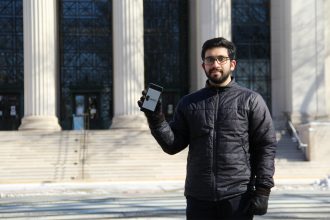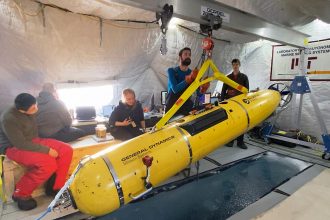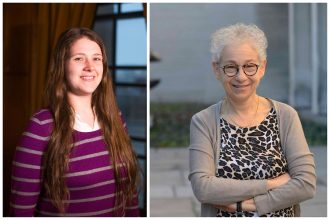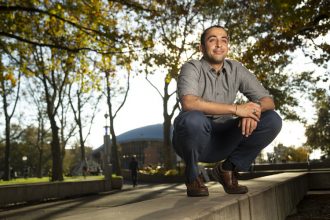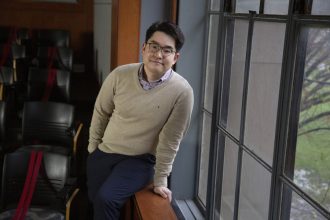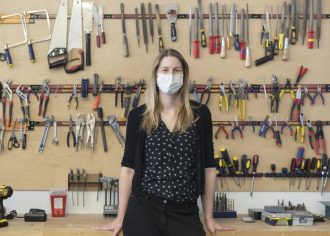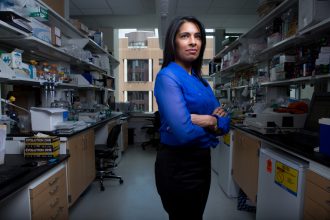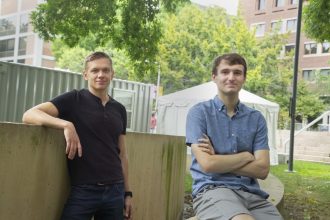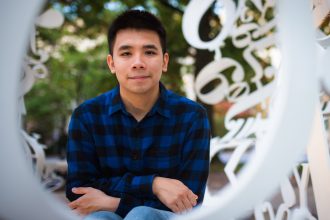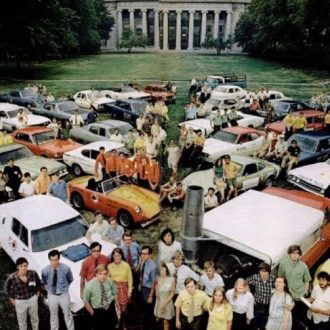Crowdsourcing data on road quality and excess fuel consumption
America has over 4 million miles of roads and, as one might expect, monitoring them can be a monumental task.
To collect high-quality data on the conditions of their roads, departments of transportation (DOTs) can expect to spend $200 per mile for state-of-the-art laser profilers. For cities and states, these costs are prohibitive and often force them to resort to rudimentary approaches, like visual inspection.
Navigating beneath the Arctic ice
There is a lot of activity beneath the vast, lonely expanses of ice and snow in the Arctic. Climate change has dramatically altered the layer of ice that covers much of the Arctic Ocean. Areas of water that used to be covered by a solid ice pack are now covered by thin layers only 3 feet deep. Beneath the ice, a warm layer of water, part of the Beaufort Lens, has changed the makeup of the aquatic environment.
Talking outside the tower
Walking into MIT can feel like entering a foreign country — one with a number for every building and an unwieldy acronym for every organization. Deeper conversations are even more opaque, as fields and sub-fields command their own complex scientific argot. But if the Covid-19 pandemic has taught us anything, it’s that bridging the gap between scientists and their wider society is more important than ever. The School of Engineering's EECS Communication Lab, in partnership with the MIT Libraries, is working to bridge that communications gap and help research scientists translate their findings for lay audiences in a series of talks called “Science Snippets.”
Sustainable solutions at home and abroad
Arnav Patel is a self-described sustainability enthusiast. Working on solutions related to climate change has been a central thread woven throughout his time at MIT. As a first-year student, he was initially drawn to mechanical engineering because he wanted to keep his options open.
Healing with hydrogels
In November, mechanical engineering PhD candidate Hyunwoo Yuk earned the top prize at the Collegiate Inventors Competition hosted by the National Inventor’s Hall of Fame. Yuk was named the graduate winner for his invention SanaHeal, a bioadhesive tape that can easily bind to tissues or organs. The tape could one day be used in place of sutures to promote healing and minimize complications after surgery.
A hands-on class responds to Covid
When Professor Stefanie Mueller needed to adapt her laboratory class to the Covid-19 pandemic, she was initially overwhelmed by the amount of work that would need to be done. That’s because Mueller’s hands-on building and fabrication class, 6.810 (Engineering Interactive Technologies), is entirely about the ways that humans interact with technology in the physical world. As it turns out, however, technology held some surprises — even for Mueller.
Faster tracking of treatment responses
When MIT announced plans to welcome back some undergraduates, ramp up research operations, and increase the number of staff on campus this past fall, its administration was faced with the challenge of doing so in a way that minimized the risk of an outbreak on campus. In typical MIT fashion, several teams of engineers and researchers started designing and building solutions to protect the campus community.
Deploying no-contact vitals-sensing kiosks across campus
When MIT announced plans to welcome back some undergraduates, ramp up research operations, and increase the number of staff on campus this past fall, its administration was faced with the challenge of doing so in a way that minimized the risk of an outbreak on campus. In typical MIT fashion, several teams of engineers and researchers started designing and building solutions to protect the campus community.
Cracking the Secrets of an Emerging Branch of Physics
Thanh Nguyen is in the habit of breaking down barriers. Take languages, for instance: Nguyen, a third-year doctoral candidate in nuclear science and engineering (NSE), wanted “to connect with other people and cultures” for his work and social life, he says, so he learned Vietnamese, French, German, and Russian, and is now taking an MIT course in Mandarin. But this drive to push past obstacles really comes to the fore in his research, where Nguyen is trying to crack the secrets of a new and burgeoning branch of physics.
Lessons from the Clean Air Car Race 50 Years Later
1970 was a milestone year for efforts to combat air pollution. On April 22, the first Earth Day was celebrated. The 1970 Clean Air Act was the first policy to establish federal regulations on car and industry emissions. In July, President Nixon announced his plan to establish the United States Environmental Protection Agency by the end of the year. In the midst of this progress, a team of MIT students and faculty, with assistance from Caltech, organized the Clean Air Car Race – a competition to see which of the many entrants could make the 3,600 miles from MIT to Caltech in fast, rally-style race, while meeting new stringent emissions standards.
